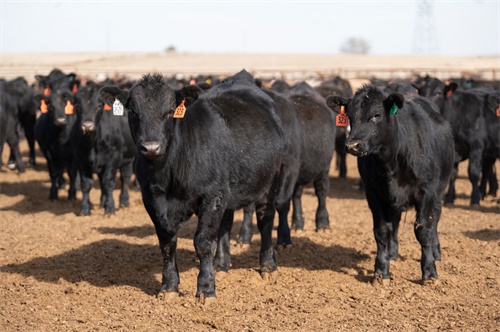When I first started working with beef cattle overseas, I noticed people always talked about ultrasound—not as some high‑tech luxury, but as a practical everyday tool on their farms. They’d chat over coffee: “Have you scanned that heifer yet?” or “What’s her ribeye area look like?” That kind of convo instantly told me: ultrasound isn’t just nice to have—it changes the game.
Getting to know ultrasound better
Ultrasound sends high-frequency sound waves (typically 2–10 MHz) into tissues, bouncing back echoes that form real-time images. It’s used for pregnancy checks, body composition, lung health—same tech whether it's used in human clinics or cattle sheds.
Farmers I spoke with often say it’s safe—zero stress, no radiation, totally non‑invasive. A vet once laughed, “We can scan as often as we want without hurting the animal or the operator.” That confidence comes from decades of practice: ultrasound’s been around in livestock since the 1950s.
What gets measured and why it matters
Let’s break down the main traits you can assess:
| Measurement | Why it matters |
|---|---|
| Ribeye area (REA) | Shows muscle mass in loin; bigger means more lean meat yield |
| Back‑fat and rump‑fat thickness | External fat gives clues to finishing stage and market readiness |
| Intramuscular fat (marbling) | Key for quality grading and eating experience |
| Lung and thoracic scans | Detect early respiratory disease, even before clinical signs |
Measuring REA lets producers see who's got the muscle—and who might be genetically elite or ready for early finishing. Fat thickness helps decide if it's time to ship the animal or keep feeding. Intramuscular fat estimation (though trickier) helps predict marbling—vital for markets like USDA or Wagyu grading systems.
Thoracic ultrasonography has recently gained traction as a lung‑health diagnostic, especially for bovine respiratory disease (BRD). It can spot lung consolidations, pleural effusion or B‑lines—sometimes before the animal even coughs or shows fever. Early detection means faster treatment and better recovery rates.
Why farmers abroad swear by it
Over in Australia and the U.S., breeders lean on ultrasound to accelerate breeding programs. Instead of waiting years and spending thousands to evaluate sires via their slaughter progeny, they scan early to get carcass‑trait EPDs in as little as two years for around $1,000 per sire.
One cattle manager said proudly, “We used to wait four to seven years and dozens of progeny before knowing which bulls were worth keeping. Now we scan calves at yearling age and already make decisions.” That kind of speed turns genetics into practical results.
On the health side, vets often mention how thoracic ultrasound appointments turn into “early warning saves.” In one study of feedlot calves, those with a lung ultrasound score of 5 had nearly 74 % treatment failure rates—way higher than calves scoring 1–3. That kind of info helps guide whether to treat aggressively or cull early.
Human‑style chat: how it feels on the farm
Here’s how conversations usually go:
“Any news on the scans?”
“Yeah, that steer’s ribeye is hitting 11 in² and fat here’s only 0.3 in—he’s lean and still growing. Might keep feeding another two weeks.”“What about the calves in pen 4?”
“Scan showed lung lesions on three of them. No cough yet, but I’m starting treatment. Saves weeks of weight loss down the road.”
It’s not highfalutin talk—just peer‑to‑peer planning, using numbers to manage feeding, finishing or veterinary steps.
Tissue growth sequencing and precision feeding
Farmers and researchers often describe growth as happening in stages: first nervous and skeletal systems, then muscle, then fat. Muscle growth peaks right after puberty, then fat accumulation becomes dominant.
Ultrasound provides data to sync feeding with these stages—for example:
If ribeye area is still growing fast, focus on lean‑growth ration (high protein, moderate energy).
Once muscle plateau is apparent, shift to high‑energy finishing to build fat and marbling.
Fat thickness data helps avoid over‑finishing and wasted resources.
That kind of feeding protocol leads to better uniformity, better carcass quality, and lower overall costs. Producers often say: “I feed smarter, not just more.”
What veterinarians highlight
Two things vets love:
Pregnancy and reproductive management: Ultrasound can detect pregnancy as early as 28–30 days post-AI, evaluate ovarian structures or cysts, and allow super‑early resynchronization protocols based on corpus luteum vascularization and Doppler scans—some scoring systems reach 90 %+ accuracy in predicting pregnancy at day 20 post‑AI.
Respiratory disease management: Thoracic ultrasound is more accurate than auscultation or temperature alone, especially for subclinical or early lung lesions. Even novice operators can get consistent results with training.
One vet told me: “I've seen cases where lung consolidation was evident on ultrasound—but the calf looked fine. Early antibiotics saved that one week of weight loss.”

The economics behind the tech
Ultrasound may seem like an upfront investment—equipment, training, time. But cost‑benefit analysis repeatedly shows big returns:
Faster sire evaluation cuts breeding selection cycles.
Better animal uniformity means fewer discounts at processing.
Early disease detection reduces treatment costs and mortality.
Precision feeding minimizes wasted feed and over‑finishing.
Producers voice it plainly: “It paid for itself in one season.”
Things to watch for
Accuracy depends on technique: hair clipping, coupling oil, consistent probe placement, ambient temperature conditions matter.
Fat layer thickness, animal weight, breed coat thickness can impact ultrasound signals. So standard protocols—like clipping hair, applying oil, scanning at repeatable anatomical points—are vital.
Training is also key. Even though basic thoracic or body‑composition scanning can be taught relatively quickly, operators need good orientation on landmarks, artifacts, and image interpretation.
Looking forward: where it goes next
I heard chatter about integrating ultrasound data with machine learning and imaging fusion tools to boost accuracy in marbling prediction or early disease risk stratification.
Portable handheld units, cloud‑based image sharing, and breed‑association databases are making ultrasound more accessible. Folks overseas often say: “Pretty soon every barn will have one.”
Wrapping it up
Ultrasound offers live, real‑time insight. It transforms guesswork into data-driven decisions about growth, health, reproduction and genetics. Conversations on farms and in vet clinics reflect how natural it feels now:
“Got the scan yesterday, looks good—go ahead with finishing.”
“Three of the yearlings flagged on lung ultrasound—treat early, keep the weight up.”
“That heifer’s corpus luteum looked great on Doppler—she’s likely pregnant, doesn’t need AI again.”
That kind of chat shows how ultrasound isn’t just a gadget—it’s part of everyday decision-making, helping farmers work smarter, not harder.
tags:


